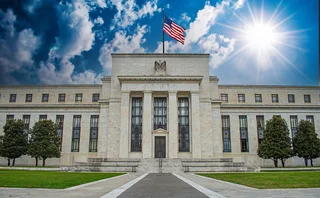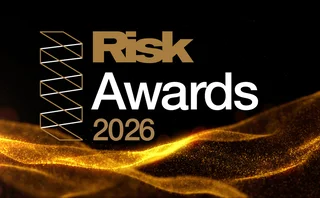

Smart weaponry aids bank fight against money laundering
Advanced algos and machine learning gain credence as regulators encourage innovation
In the struggle against money laundering, banks are on the defensive. Tough laws have forced firms to develop elaborate procedures to detect prohibited transactions. But when these systems fail – as they often do – lenders leave themselves open to crippling financial penalties. US banks faced fines for anti-money laundering breaches of $1.37 billion in 2018, with those in Europe not far behind at
Only users who have a paid subscription or are part of a corporate subscription are able to print or copy content.
To access these options, along with all other subscription benefits, please contact info@risk.net or view our subscription options here: http://subscriptions.risk.net/subscribe
You are currently unable to print this content. Please contact info@risk.net to find out more.
You are currently unable to copy this content. Please contact info@risk.net to find out more.
Copyright Infopro Digital Limited. All rights reserved.
As outlined in our terms and conditions, https://www.infopro-digital.com/terms-and-conditions/subscriptions/ (point 2.4), printing is limited to a single copy.
If you would like to purchase additional rights please email info@risk.net
Copyright Infopro Digital Limited. All rights reserved.
You may share this content using our article tools. As outlined in our terms and conditions, https://www.infopro-digital.com/terms-and-conditions/subscriptions/ (clause 2.4), an Authorised User may only make one copy of the materials for their own personal use. You must also comply with the restrictions in clause 2.5.
If you would like to purchase additional rights please email info@risk.net
More on Risk management
Squashing CVA still dominates XVA desks’ priorities
Dealers favour options-based strategies to manage charges; some explore contingent CDSs amid rising exposures
EU single portal faces battle to unify cyber incident reporting
Digital omnibus package accused of lacking ambition to truly streamline notification requirements
XVA desks prioritise core tech upgrades over AI
Vendor upgrades, cloud-native rebuilds and sensitivities tooling dominate 2026 budget road maps
Chicago data centre outage forced clearers to turn away clients
Friday’s cooling system failure highlights cracks in tech and concentration risk of big CCPs
LCH goes live with agency model for client clearing
English law version of FCM-style European trust model approved, as Eurex lags behind
US banks hoping for end of DFAST global market shock
As Fed consults on stress-test reform, lobby group argues regulator is double-counting market risk
NMRF framework: does it satisfy the ‘use test’?
Non-modellable risk factors affect risk sensitivity and face practical and calibration difficulties, argue two risk experts
Risk Awards 2026: The winners
Citi claims top derivatives prize, lifetime award for Dennis McLaughlin, JP Morgan wins equities







